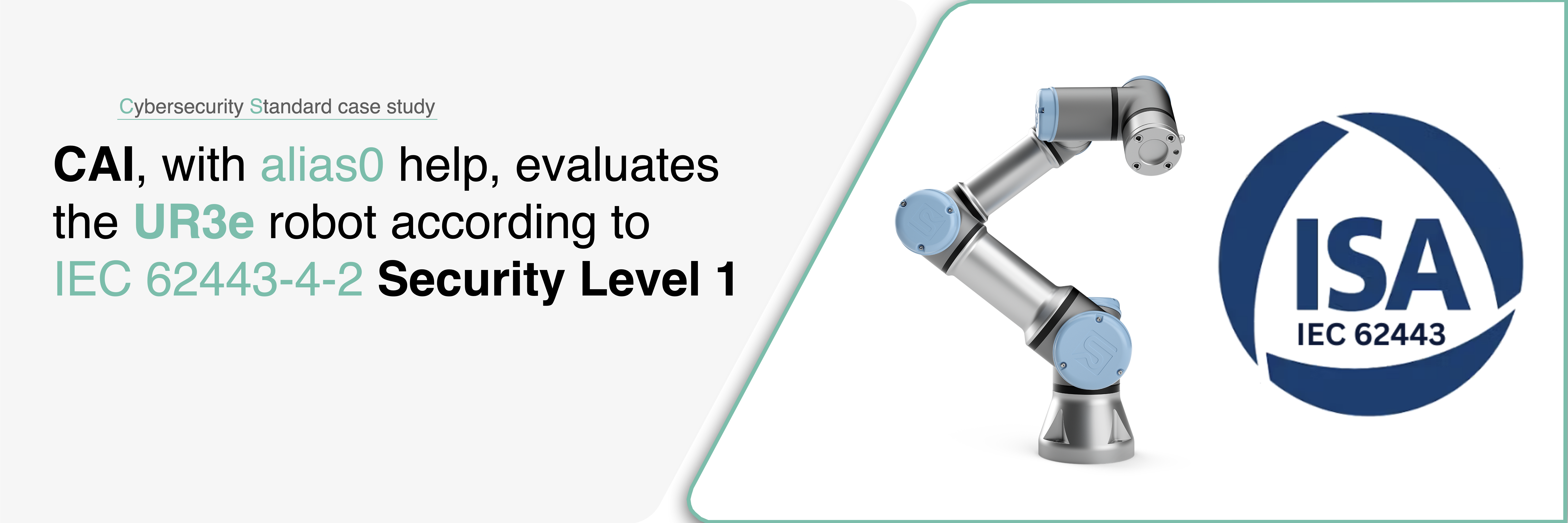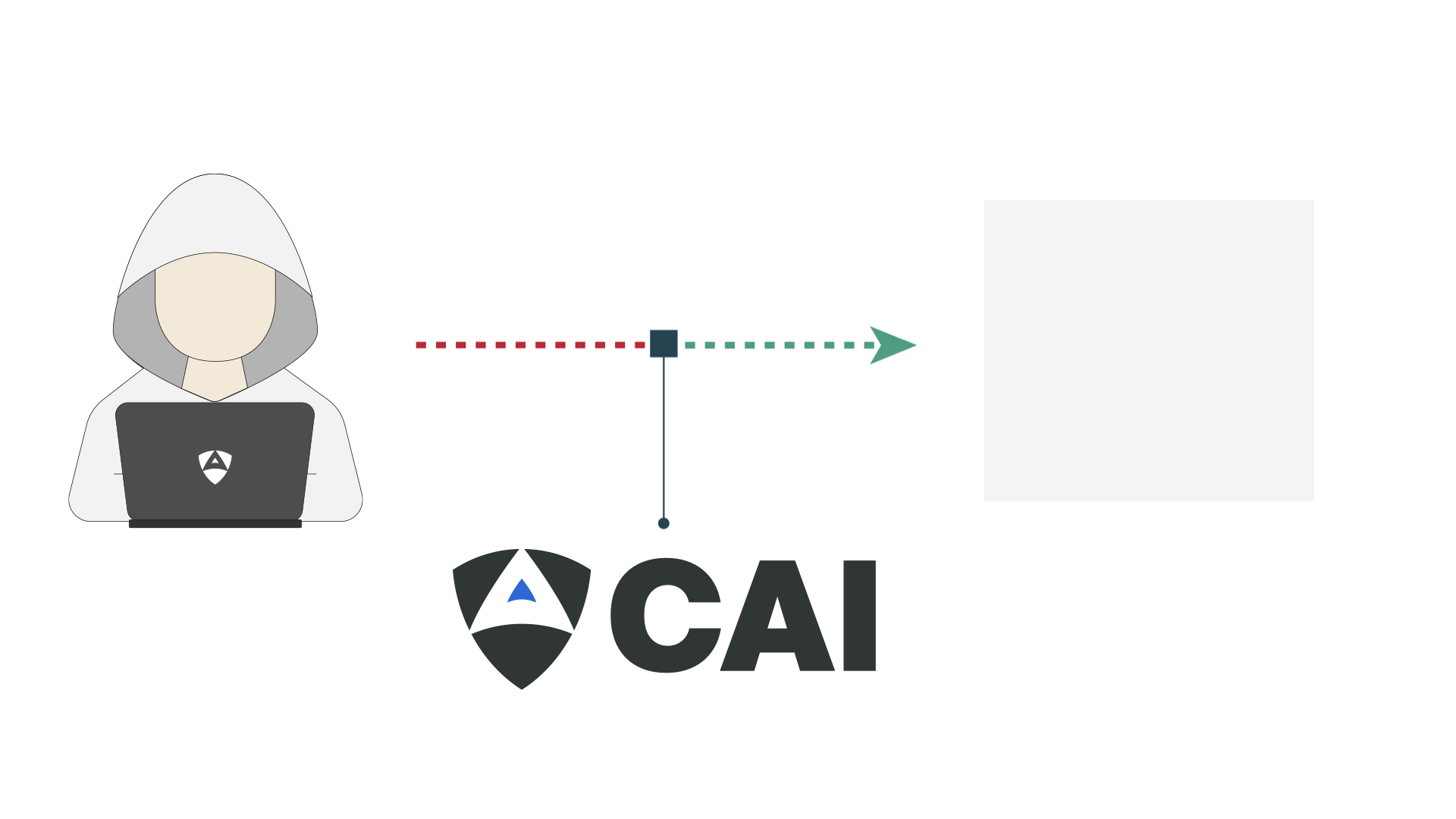

The UR3e collaborative robot from Universal Robots was evaluated against the IEC 62443-4-2 Security Level 1 (SL1) standard, which defines baseline technical cybersecurity requirements for industrial components. The assessment focused on key SL1 controls such as authentication, secure communication, and system hardening, reflecting a threat model involving low-sophistication attackers.
Using the CAI (Cybersecurity AI) framework, the evaluation was automated and applied to a UR3e device (172.16.100.78), generating a detailed compliance report. The report, saved in .txt format to the user’s home directory, documents the robot's adherence to SL1 requirements and identifies security gaps requiring remediation. This case highlights how AI-powered tools can streamline standards compliance in industrial robotics.


This video shows a CAI agent performing an automated compliance assessment of a UR3e robot per IEC 62443-4-2 Security Level 1. After discovering the device on the local network, the agent evaluated system-level security controls—user authentication, secure communication, and logging—against SL1 criteria. The results were compiled into a compliance report saved as a .txt file on the host machine, summarizing the robot’s cybersecurity posture.
Open the report ❯CAI represents the first open-source framework specifically designed to democratize advanced security testing through specialized AI agents. By 2028, most cybersecurity actions will be autonomous, with humans teleoperating, making CAI's approach to AI-powered vulnerability discovery increasingly critical for organizational security. The framework transcends theoretical benchmarks by enabling practical security outcomes. CAI achieved first place among AI teams and secured a top-20 position worldwide in the "AI vs Human" CTF live Challenge, earning a monetary reward and various other prizes and bounties ever since then. This performance demonstrates that AI-powered security testing can compete with and often exceed human capabilities in vulnerability discovery.
Explore CAI's source code ❯ISA-IEC 62443 is an international series of standards developed to improve cybersecurity for industrial automation and control systems (IACS). It provides a comprehensive framework addressing risk assessment, system design, and secure operation to protect critical infrastructure from cyber threats. Part 4-2 of the standard specifically focuses on technical security requirements for IACS components, defining detailed criteria for secure development and deployment.
As industrial systems become more interconnected, complying with ISA-IEC 62443-4-2 is increasingly vital to safeguard devices and networks against vulnerabilities. This standard helps manufacturers and operators implement robust security controls—such as authentication, secure communication, and logging—to reduce risk and ensure resilient and trustworthy automation environments.
Universal Robots (UR) is a Danish manufacturer of collaborative robot arms (cobots) designed to work safely alongside humans in industrial settings. UR’s platforms—such as the UR3e, UR5e, and UR10e—are widely used in manufacturing, logistics, and electronics due to their ease of use, flexibility, and network connectivity. These systems integrate with factory infrastructure and offer powerful remote interfaces, such as the Dashboard Server, to enable control and monitoring.
As cobots become more connected, UR platforms increasingly face cybersecurity risks. Interfaces like the Dashboard Server can expose critical functions if left improperly secured, making it essential to assess and mitigate these threats to ensure safe and resilient automation.

7
~0.5 €
Validating a collaborative robot like the UR3e against the IEC 62443-4-2 standard presents a unique challenge. Designed primarily for flexibility and ease of integration, such systems are rarely developed with security-by-design in mind. Assessing compliance with SL1 requirements demands a systematic inspection of technical controls across multiple categories—from user authentication and secure communications to system hardening and audit capabilities. Mapping these expectations onto a commercially available robot involves identifying how its real-world behavior aligns—or conflicts—with the component-level requirements defined by the standard.
To assess compliance with IEC 62443-4-2 SL1, CAI initiated an automated routine that scanned the local network using Nmap to locate industrial components. The UR3e robot was identified at IP 172.16.100.78 based on its characteristic open ports. A follow-up scan and direct TCP probing of port 29999 confirmed the availability of unauthenticated services. Using scripted socket connections, the agent interacted with the interface to verify the presence or absence of technical controls specified by the standard, such as authentication, session handling, and protocol hardening. The results were compiled into a structured compliance report aligned with 62443-4-2 requirements.
